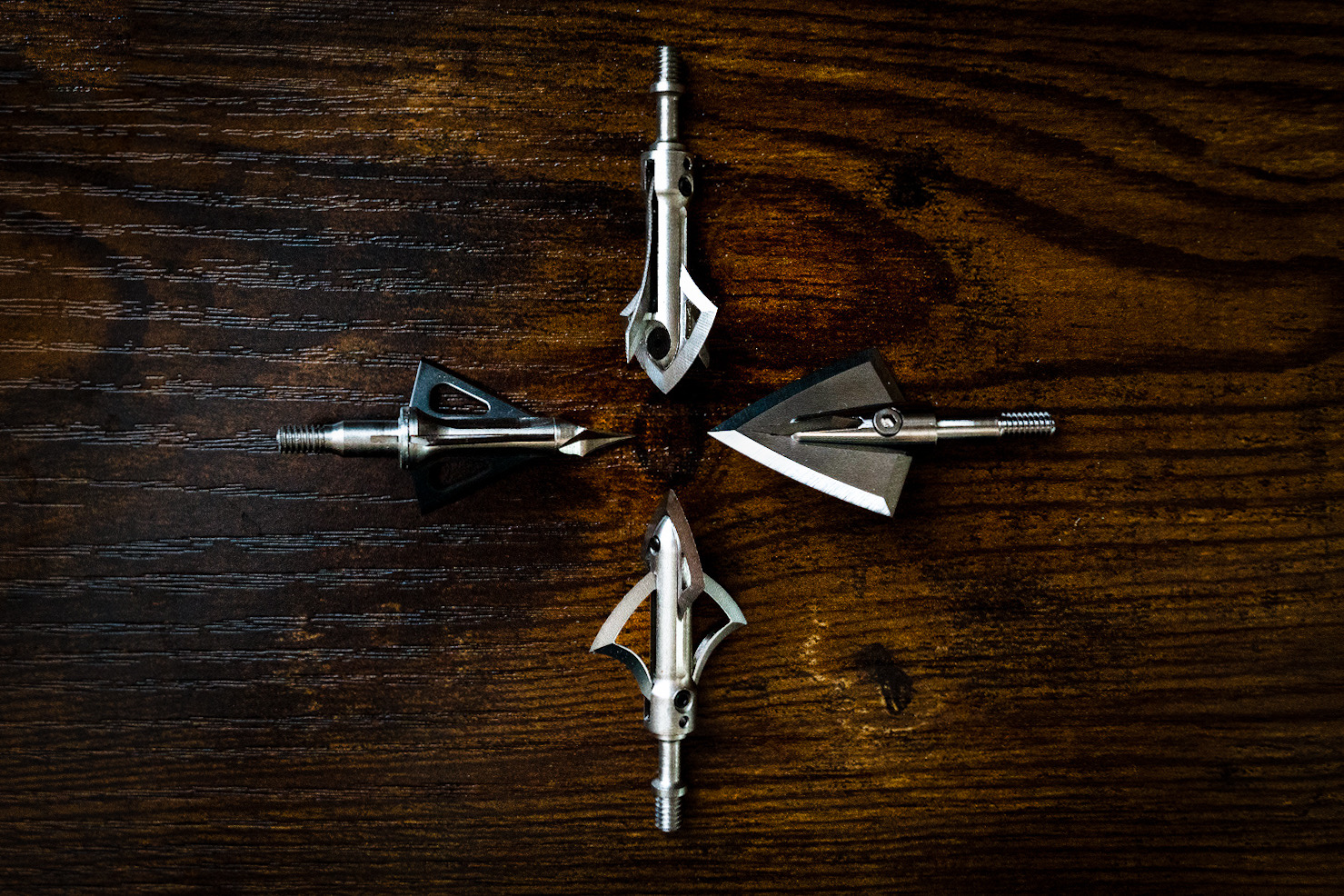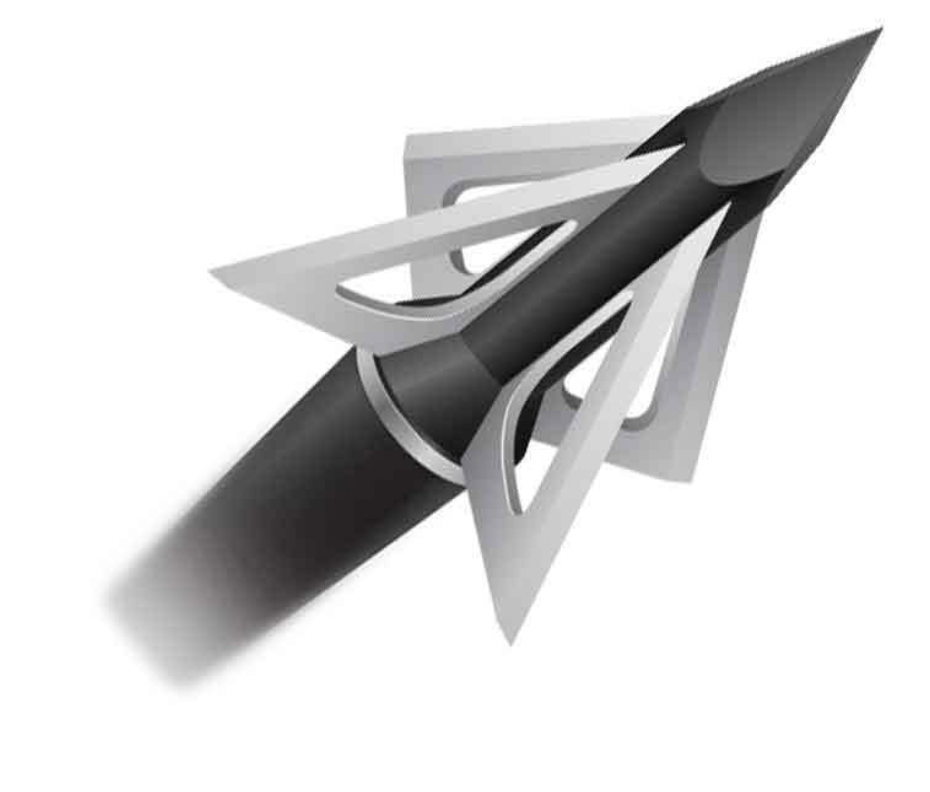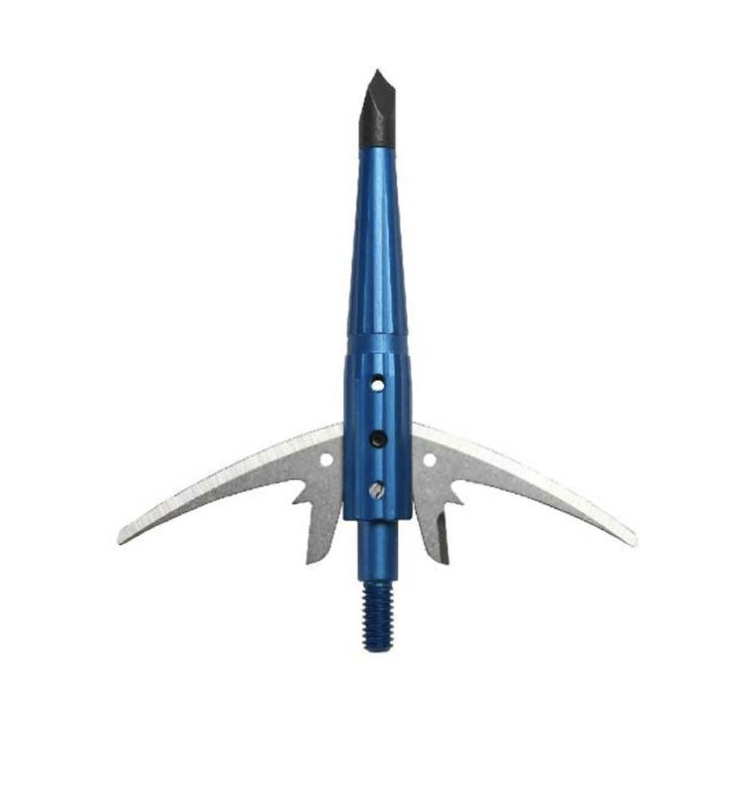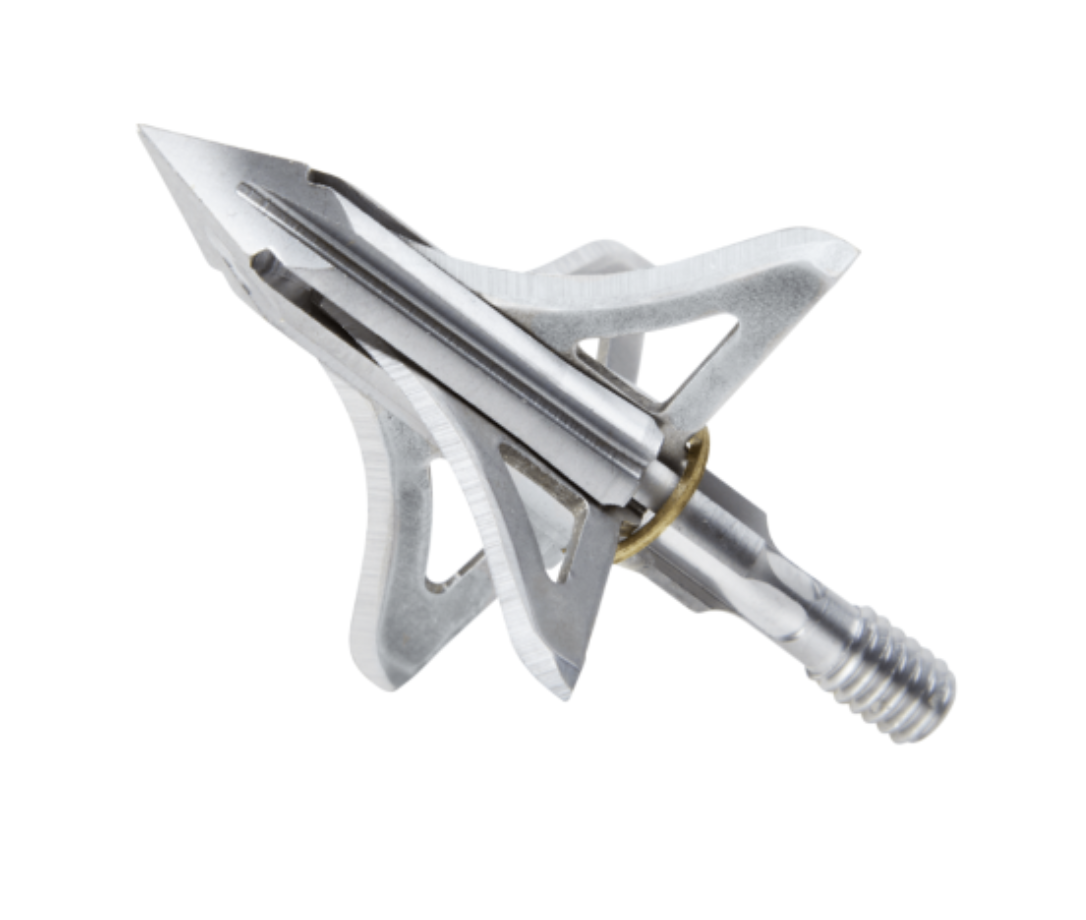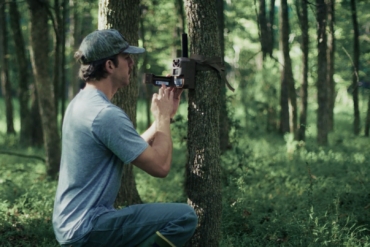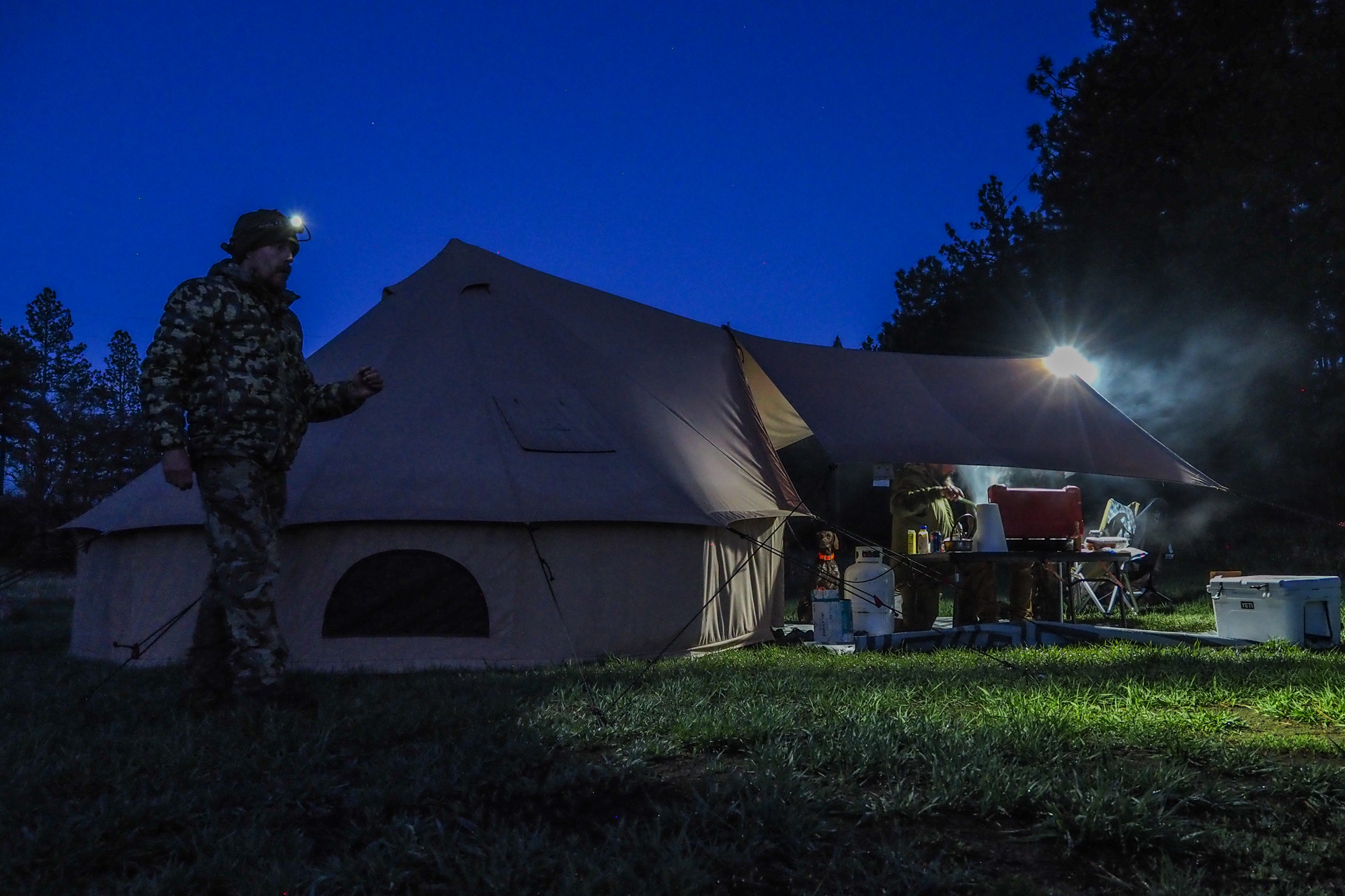Picking the right broadhead for hunting season is like picking a hunting partner … at least on the trust bit. Trust is a must. Bowhunting involves an unthinkable number of variables. Some of them we can control, and others we can’t. What broadhead you screw on your arrow is something you can and should take seriously before heading afield.
Spending year after year in the field and on the range slinging broadheads has a way of bringing to light what works and what doesn’t. The broadhead needs to be durable, have exceptional flight, and excel at inflicting devastating wound channels. To help you decide what broadheads to have your eyes on for 2025, we’ve put together a list of must-see heads.
Editor’s Note: On August 21, 2025, we included a new section to this guide: Broadheads Being Tested in Fall 2025. The section highlights new broadheads the GearJunkie team will be hunting with this year. After using them in real hunting scenarios, they will be ranked among the other broadheads on this list.
The Best Broadheads for Hunting in 2025
Evolution Jekyll
- Material: 420 stainless steel ferrule, 7075 aircraft aluminum
- Cutting diameter: 0.75-inch up front, 1.0-inch rear
- Weight: 100, 125, and 150-grain (Crossbow 100-grain)
Pros
- Exceptional arrow flight
- Modular ferrule
- Rear sharpened blades
Cons
- Slightly louder in flight than other heads
Slick Trick Standard
- Material: Super Steel
- Cutting Diameter: 1”
- Weight: 85, 100, 125 grains
Pros
- Incredible value for the price
- Durable
- Great flight
Cons
- Some assembly required, which could lead to potentially cutting yourself. These are SHARP!
Day Six Evo
- Material: S35VN Steel
- Cutting diameter: 1-1/16" (main blade), ½" (bleeder)
- Weight: 100, 125, and 150 grain
Pros
- Fantastic edge retention
- Very durable
- Made in the U.S.A.
Cons
- Pricey
Sevr
- Material: Titanium ferrule, stainless steel blades
- Cutting diameter: 1.5", 1.75", or 2.0"
- Weight: 100 or 125 grain
Pros
- Exceptional arrow flight
- Pivoting blade design discourages bone deflection
- Able to purchase just one head at a time
Cons
- Some quivers may need modification to avoid making blades open and breaking collar from broadhead being pushing into the hood.
Evolution Outdoors Hyde
- Material: 420 stainless steel ferrule, 7075 aircraft aluminum blades (100 grain), or 416 hardened stainless steel (125 and 150 grain)
- Cutting diameter: 0.75" fixed, 2.0" mechanical
- Weight: 100, 125, 150 grain (Crossbow version in 100 grain also available rated to 500 fps)
Pros
- Exceptional arrow flight
- Benefits of both fixed and mechanical
- Multifunctional ferrule allows one to turn the Hyde into the Jekyll (fixed blade from Evolution Outdoors)
Cons
- The pin that holds the blades in place needs to be replaced, as it mars each time the blades open.
Annihilator
- Material: 4140 alloy steel hardened to Rockwell RC: 52
- Cutting diameter: 0.910"
- Weight: 100 and 125 grain/XL sizes available in 100, 125, 150 grain
Pros
- Very durable
- Non-closing wounds
- Made in the USA
Cons
- Smaller cutting diameter than others
- Material: Ferrule – Aluminum, Blades – Steel
- Cutting Diameter: 2.5"
- Weights: #269 – 125 grain, #261 – 100 grain
Pros
- Great arrow flight
- Big cutting diameter
- Has a practice mode via the Black-Lock Technology
Cons
- Needs the o-ring to hold the blades closed
- Material: Stainless steel
- Cutting diameter: 1-3/16"
- Weights: 100 grain
Pros
- Affordable
- Trocar tip (bone-breaking)
- One-piece steel ferrule
Cons
- Only available in 100 grain
- Material: Titanium ferrule, stainless steel blades
- Cutting diameter: 2"
- Weight: 100 grain
Pros
- No collar
- Large cutting diameter
- Exceptional arrow flight
Cons
- Only available in 100 grain
- Material: 100% stainless steel
- Cutting diameter: 1-1/16"
- Weights: 100, 100 (deep six) 125, and 150 grain
Pros
- Readily available
- Good flight
- Made in the USA
Cons
- Difficult to remove from packaging, which can be dangerous
- Material: A2 Tool Steel
- Cutting diameter: 1-1/16" (main blade); 0.75" (bleeder blade)
- Weight: 100, 125, 150, 175, 200, 225, and 250 grain
Pros
- Great variety of weights available
- Single bevel causes internal rotation for increased damage
- Durable
Cons
- Expensive
- Material: High-carbon steel
- Cutting Diameter: 1 inch
- Weight: 100 and 125 grains
Pros
- Low profile offers great arrow flight
- Single-bevel will corkscrew through an animal for a more devastating wound channel
- Great durability
Cons
- Small cutting diameter, but corkscrew from single bevel will help with that
- Material: 100% heat-treated stainless steel
- Cutting diameter: 1-3/16"
- Weight: 100 grain
Pros
- Tried and true name
- T-shaped connection for added durability
- 4 blade makes for 3+ inches of cutting surface
Cons
- Only available in 100 grain
- Material: Stainless steel
- Cutting diameter: 1⅜"
- Weight: 85, 100, 125-grain (1⅜") 100, 125-grain (1¾") 100-grain (2.0")
Pros
- No rubber bands
- Affordable
- Lots of different weights to choose from
Cons
- The Razorcut tip could break and not be reusable
Broadheads Being Tested in Fall 2025
Yes, you can “test” broadheads in a lab environment. However, even the most “scientific” tests acknowledge that there is nothing that replicates sending an arrow through an animal in the field. There are too many factors that affect real-world performance. That’s why the broadheads will always will be a topic of debate.
In response to that, here are the broadheads the GearJunkie team plans to put to the test in real-world hunting scenarios in 2025. Since no one on the team has put any through an animal yet, we’re not comfortable giving them a full review. But, based solely on the hype surrounding these offerings, you may want to pick some up this year to try for yourself.
The BEAST Titanium Broadheads ($85) stand out with blades that avoid hitting bone. In fact, BEAST stands for Bone Evading Advanced Spring Technology. A spring located inside the broadhead enables the blades to retract and redeploy upon contact with hard surfaces. That technology, in conjunction with Titanium construction, could make this the most durable mechanical broadhead available. And after holding them in hand, it’s clear they’re some of the sharpest out of the package.
One of the biggest complaints about mechanical broadheads is failure to deploy or early deployment. Both are bad and lead to catastrophic consequences. The Speed Broadheads Titanium ($99) are the brainchild of the same people who brought the industry Rage Broadheads. These broadheads contain an internal piston that prevents in-flight deployment, yet will deploy with less force than the competition upon impact.
Broadheads Comparison Chart
| Broadhead | Price | Material | Cutting Diameter | Weights |
|---|---|---|---|---|
| Evolution Jekyll | $60 | 420 stainless steel, 7075 aircraft aluminum | 0.75″ up front, 1.0″ rear | 100, 125, 150 grain |
| Slick Trick Standard | $50 | Super steel | 1” | 85, 100, 125 grain |
| Muzzy Trocar three-blade | $45 | Stainless steel | 1-3/16“ | 100 grain |
| Day Six Evo | $99 | S35VN Steel | 1-1/16″ (main blade), ½” (bleeder) | 100, 125,150 grain |
| Sevr | $16 | Titanium ferrule, stainless steel blades | 1.5″, 1.75 in., or 2.0“ | 100, 125 grain |
| Evolution Outdoors Hyde | $60 | 420 stainless steel, 7075 aircraft aluminum | 0.75″ fixed, 2.0″ mechanical | 125, 150 grain |
| Annihilator broadheads | $59 | 4140 alloy steel | 0.910“ | 100,125, 150 grain |
| Hypodermic Trypan NC | $40 | Titanium ferrule, stainless steel blades | 2“ | 100 grain |
| Grim Reaper Micro Hades Pro | $45 | Stainless steel | 1-1/16“ | 100,125, 150 grain |
| Iron Will single-bevel broadhead | $120 | A2 Tool Steel | 1-1/16″ (main blade); 0.75 in. (bleeder blade) | 100, 125, 150, 175, 200, 225, 250 grain |
| Swhacker Levi Morgan LRP | $51 | Aluminum ferrule, Steel blades | 2.5″ | #269 – 125 grain, #261 – 100 grain |
| Tooth of the Arrow Single-Bevel | $55 | High-carbon steel | 1″ | 100,125 grain |
| Trophy Taker Shuttle T-Lok Maverick | $45 | 100% heat-treated stainless steel | 1 3/16“ | 100 grain |
| Grim Reaper Razorcut | $50 | Stainless steel | 1⅜“ | 85, 100, 125 grain |
Why You Should Trust Us
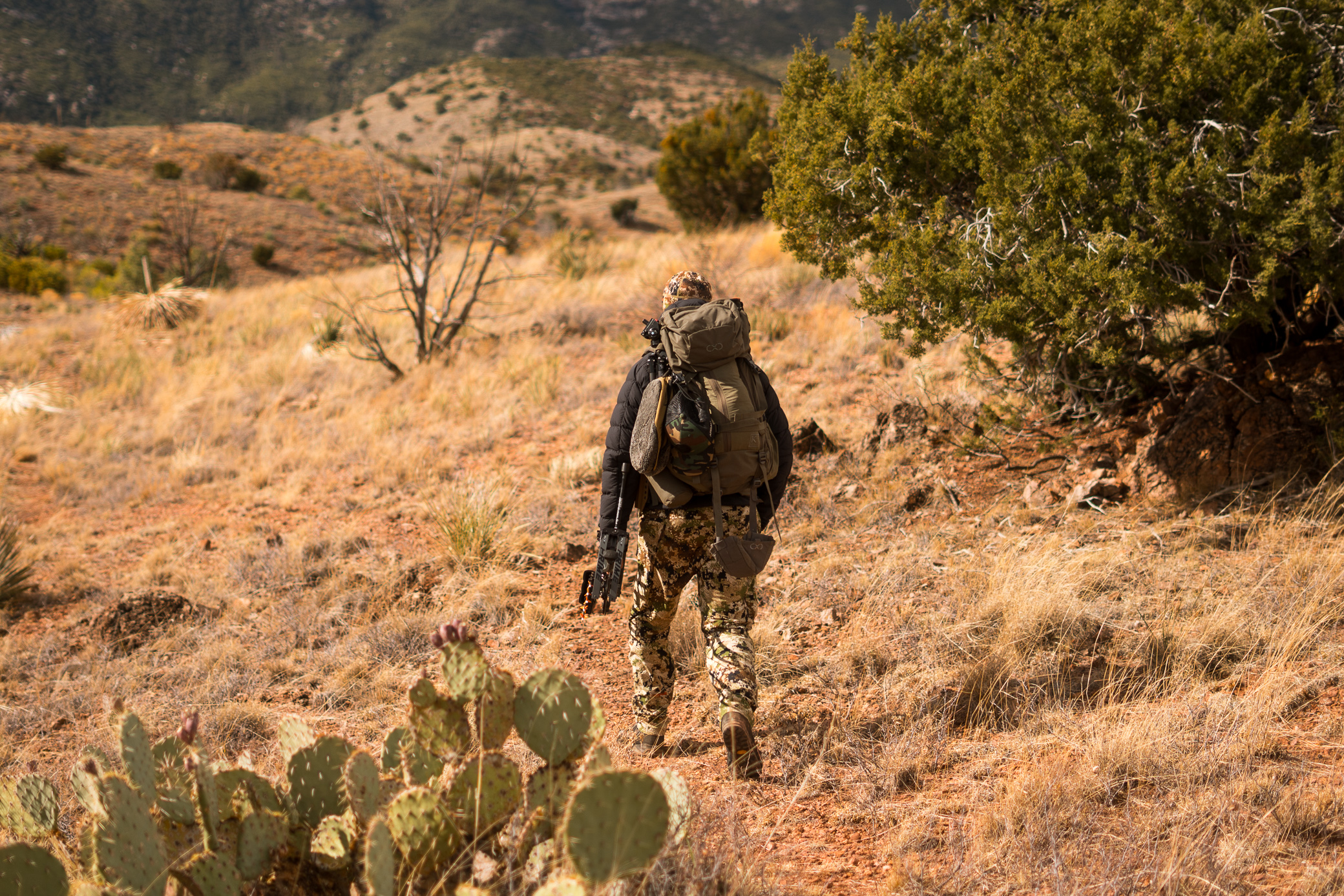
Failure is something I became friends with early on in bowhunting. Through the lessons that came with this failure, it’s become very apparent to me what works and what doesn’t. With broadheads, failure is not an option for me.
If all of the hours got added up of me spending time in the bowhunting woods trying to reach out and touch big game animals with broadheads, well, I’d probably consider myself even luckier than I already do. Those woods are a classroom, and choosing which broadheads come along for the ride, could mean the difference of getting an A or an F.
Whether it’s trying to hit a dot on a target or hit a single patch of hair on a live animal, broadhead, functionality, durability, and effectiveness are all things on my radar. Broadheads are shot from 20-80 yards with field points. They hit the ground, brick walls, and rocks. The best test of all, though, is field time. When I find one that hits all of those marks, I hang on for dear life, because confidence is not easily earned out there.
Along with my personal experience, I also took into consideration the opinions and experiences of other seasoned hunters around me. And with that what broadheads were hot on the market was also paid attention to.
Every broadhead listed above will do what you need it to do. If you’re kicking around what broadheads to run for the coming bowhunting season, one of these is going to do you right and then some.
Buyer’s Guide: How to Buy the Best Broadheads for Hunting
Mechanical vs. Fixed
One of the age-old and ongoing debates in archery hunting camps is mechanical broadheads versus fixed-blade broadheads. Passionate arguments exist on both sides of the spectrum and both broadhead designs reliably work. Which one is better, though? The better question is which one is better for you.
The flat-out truth is this — both of these broadhead designs work. Endless success photos from bowhunters across the country are the proof in the pudding. Of course, each has its pros and cons. So, we’re going to break it down.
Fixed Blade

The fixed-blade broadhead has been doing its thing since the beginning of bowhunting. It’s been there and done that millions of times over again. So, it’s no surprise when hunters cling to this style of head. What you get is what you get with a fixed blade.
The biggest advantage of running a fixed-blade broadhead is going to be reliability. There are no moving parts on a fixed blade like there are on a mechanical broadhead. For this reason, there is no worry of failure.
Along with that, these are inherently going to penetrate better, as there is no loss of energy from blades having to open. That means more pass-through shots. And lastly, fixed blades tend to be more durable overall. Especially the one-piece designs and heads made with higher-end steel.
When it comes to downsides, the first that comes to mind is tuning. Fixed-blade broadheads are harder to tune across the board. These vanes on the front end of your arrow influence flight much more than mechanicals do. This makes field point accuracy harder to come by.
Secondly, you might get more pass-through shots, but the wound channels are smaller. Smaller wound channels can lead to tougher blood trails, especially on marginal shots. And the last note is that higher-end fixed blades are also much more pricey.
Pros
- Reliable
- Better penetration
- Durable
Cons
- Harder to tune
- Smaller wound channels
- Higher-end heads are very pricey
Mechanical
Technology is an ever-evolving thing. People see gaps in efficiency and naturally want to fill them. The mechanical broadhead is a perfect example of that. It excels where the fixed blade doesn’t.
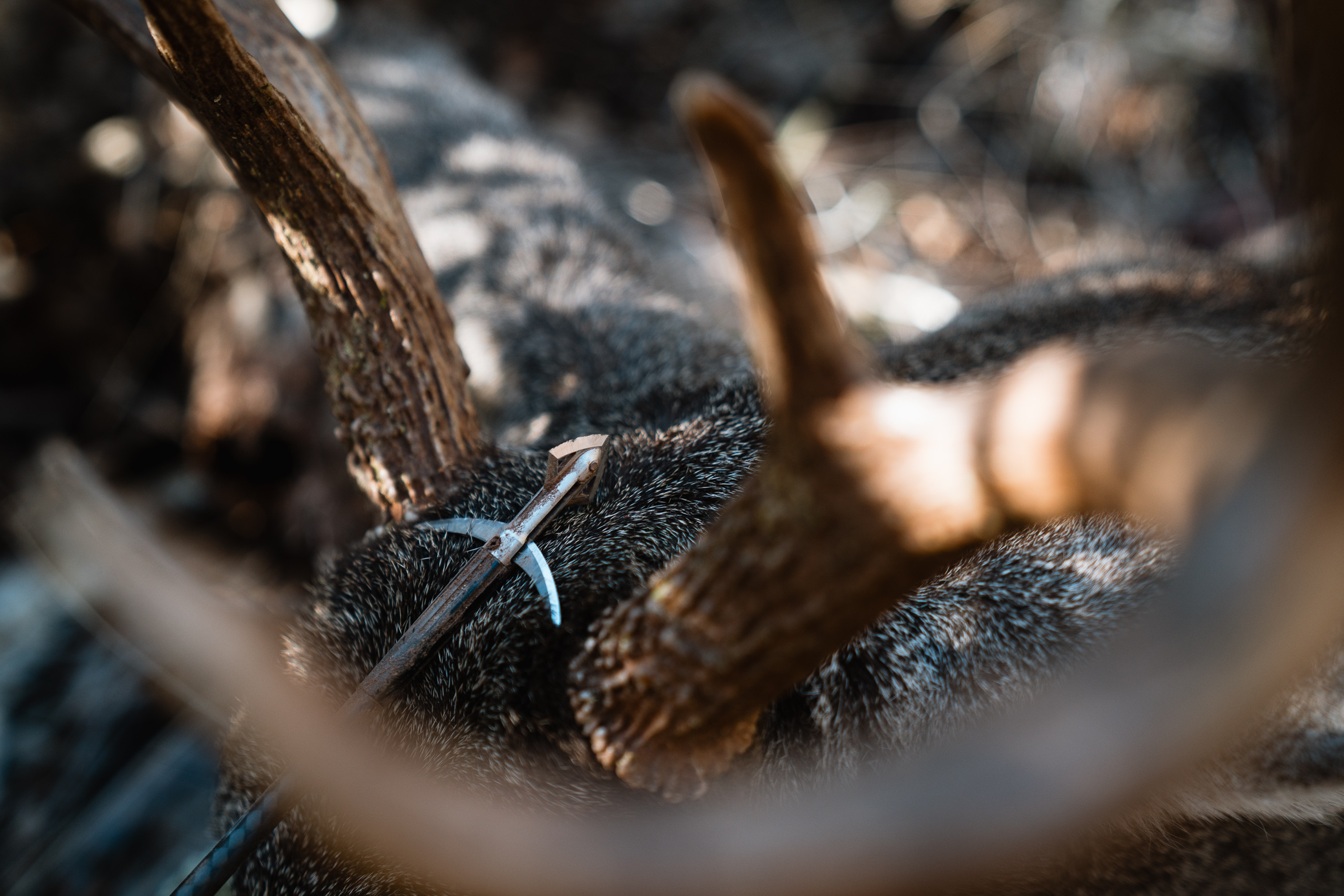
A huge selling point for mechanical broadheads is their impeccable arrow flight. It is very unlikely that you’ll need to do any sort of broadhead tuning with these things. This makes things so much easier before a hunt.
And once you do get on that hunt, you’ll hopefully loose an arrow at what you seek. Note that the blood trail is nothing short of fantastic, due to the massive cutting diameter that these broadheads inflict. If that sounds good to you, you won’t have to pay an arm and a leg to get yourself into a quality mechanical broadhead, either.
While the mechanical broadhead excels where the fixed-blade broadhead doesn’t, it also lacks where the fixed-blade excels. First on the list is reliability. These have moving parts and can absolutely fail. With how hard archery opportunities are to come by, that doesn’t sit well with some bowhunters.
And because these heads expand on impact, there is always a loss of energy due to the force it takes to open up the blades. This robs folks of penetration. If the broadhead indeed comes out the other side, it’s also a very real possibility that it won’t all be intact. Mechanical broadheads aren’t nearly as durable as fixed blades.
Pros
- Impeccable arrow flight
- Huge wound channels = Great blood trails
- Affordable
Cons
- Can fail and not open
- Lacks in penetration
- Prone to breaking
Final Thoughts

When the book comes to a close, I’m not going to tell you that there is a right answer here across the board. There are too many variables for that.
Some folks swear by fixed blades and others swear by mechanicals, and that says two things. One, they are both damn good at their job. And two, don’t get too caught up in what other folks think. Mold your arrow setup to you and your style of hunting.
In the end, a broadhead is just a tool. The person wielding that tool is the one really running the show.
FAQ
We stand behind our top pick of the Evolution Outdoors Jekyll.
100 and 125-grain broadheads are fantastic for deer hunting
Honestly, it’s the one you shoot the most accurately
This is where sound bow tuning comes into play. A well-tuned bow will group broadheads and field points together. Lower profile heads are going to be easier to tune.
